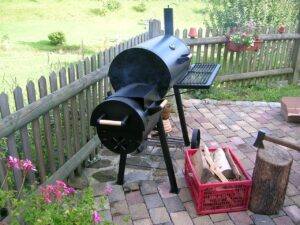Wood pellets are a popular choice for heating homes, businesses, and other spaces. They are made from compressed sawdust and other wood waste materials, making them an eco-friendly and cost-effective alternative to traditional heating fuels.
However, many people wonder if wood pellets go bad over time and how it affects their performance.
Factors Affecting Wood Pellet Quality
The quality of wood pellets can be affected by several factors, including moisture content, exposure to air and sunlight, storage conditions, and the type of wood used.
High moisture content can cause pellets to break down and become unusable, while exposure to air and sunlight can cause them to lose their effectiveness.
Storage conditions are essential to prevent wood pellets from going bad. Ideally, they should be kept in a dry, cool, and dark place.
The type of wood used to make the pellets also plays a role in their quality. Hardwoods like oak and hickory produce high-quality pellets, while softwoods like pine and spruce produce lower quality pellets.
Signs of Bad Wood Pellets
There are several signs that wood pellets have gone bad. Discoloration is one of the most obvious signs. Good quality pellets should be uniform in color, while bad pellets may have dark spots or discoloration.
Foul odor is another sign of bad pellets. Pellets that have gone bad emit a musty or moldy smell. Increased ash production is also a sign that pellets have gone bad. Poor heat output is another indicator of bad pellets.
If your stove or boiler is producing less heat than usual, it may be due to the quality of the pellets.
Effects of Using Bad Wood Pellets
Using bad wood pellets can have several negative effects. They can damage your pellet stove or boiler, leading to costly repairs or replacement.
Bad pellets can also reduce heat efficiency, meaning you will need to burn more pellets to achieve the same level of heat output. This can result in higher fuel costs and increased maintenance costs.
Preventing Wood Pellets from Going Bad
Preventing wood pellets from going bad is essential to ensure their effectiveness. Proper storage techniques are crucial, including keeping them in a dry, cool, and dark place.
Moisture meters can be used to test the moisture content of the pellets. Purchasing from reputable sources is also important to ensure that you are getting high-quality pellets.
Regular cleaning and maintenance of your pellet stove or boiler can also help prevent damage and reduce the risk of bad pellets.
Conclusion
In conclusion, wood pellets can go bad over time, affecting their performance and causing damage to your pellet stove or boiler. It is essential to understand the factors that affect the quality of wood pellets and how to prevent them from going bad.
Proper storage techniques, using moisture meters, purchasing from reputable sources, and regular cleaning and maintenance can help ensure that your wood pellets are of good quality and provide efficient heating for your home or business.
